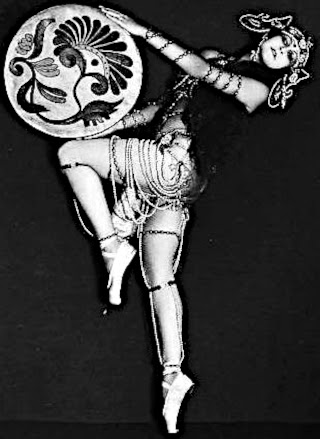Looking around the web, and considering some recent questions regarding gold and SDRs on the Fed's and Treasury's balance sheets and reserve statements, I came across quite a bit more confusion and misinformation than one might have expected to find on what should be a fairly straightfoward question, ranging from completely incorrect but precise numbers to 'shitloads' at Yahoo!Answers.
So, I spent some time reading the relevant source documents, and have decided to publish this little fact sheet here, so that one might at least be able to find some of the basic facts about the US gold holdings on the books of the Treasury and the Fed in one place, with references.
There is also a little detail about the SDRs. It should be noted that because SDRs may be added to the Treasury's books, as in the recent allocation from the IMF, it does not mean necessarily that they are monetized by the Fed and placed on their own balance sheet.
Not getting into issues of where the gold is, what claims there may be on it, and what fineness it may actually be, according to the US Treasury:
The US currently holds 261,499,000 fine troy ounces in its reserves. US International Reserve Position, US Treasury
The gold is valued on the books at $42.2222 per fine troy ounce.
This represents a total value of $11,041,063,078.
This value appears on the Treasury's International Reserve Position US Treasury on Line 4.
Since there are 32150.7466 troy ounces in a tonne, the US Treasury is holding 8,133.528072 tonnes of fine gold.
Federal Reserve Gold Certificates
The Federal Reserve holds $11,037,000,000 in gold certificates as assets on its Balance Sheet as shown in their weekly H.41 report. The Fed has no physical gold of its own. According to my reading of the relevant law, the Fed is not able to place claims upon or issue those gold certificates to any other entity other than the 12 federal reserve banks.
With regard to the Fed's Gold Certificates here is some history by way of explanation:
Acting under this authority [the Emergency Banking Act of March 9, 1933], the secretary of the Treasury issued orders dated December 28, 1933, and January 15, 1934, the latter requiring all gold coin, gold bullion, and gold certificates to be delivered to the Treasurer of the United States on or before January 17, 1934.
A new type of gold certificate, series of 1934, in denominations of $100, $1,000, $10,000, and $100,000, was issued only to Federal Reserve banks against certain credits established with the Treasurer of the United States. These certificates are not paid out by Federal Reserve banks and do not appear in circulation. They bear on their face the wording: "This is to certify that there is on deposit in the Treasury of the United States of America dollars in gold, payable to bearer on demand as authorized by law."
Gold certificates, however, have not been printed since January, 1935. Under the Gold Reserve Act of January 30, 1934, all gold held by the Federal Reserve banks was transferred to the U.S. Treasury, in accordance with Presidential Proclamation of January 31, 1934, the former receiving the gold certificate credits on the books of the Treasury at the former statutory price for gold $20.67 per ounce.Gold assets were valued at $35 per fine troy ounce, giving effect to the devaluation January 31, 1934, until May 8, 1972, when they were revalued at $38 pursuant to the Par Value Modification Act, P.L. 92-268, approved March 31, 1972. The increment amounted to $822 million.
Gold assets were subsequently revalued at $42.22 pursuant to the amendment of Section 2 of the Par Value Modification Act, P.L. 93-110, approved September 21, 1973. This increment amounted to $1,157 million. All of the U.S. Treasury's monetary gold stock valuation, including the preceding revaluation increments, has been monetized by the U.S. Treasury by the issuance to the Federal Reserve banks of $11,160,104,000 for their gold certificate account (total as of close of 1980). In addition, the U.S. Treasury monetized $2,518 million (as of close of 1980) of the U.S. special drawing rights by issuance to the Federal Reserve banks for their special drawing rights certificate account.
On the books of the Federal Reserve banks, neither the gold certificate account nor the special drawing rights certificate account plays any restrictive role in Federal Reserve banks' operations. With the U.S. losing monetary gold in recent years of balance-of-payments deficits, causing decline in gold certificates (credits), two restraints were eliminated: P.L. 89-3, March 3, 1965, eliminated the requirement contained in Section 16 of the Federal Reserve Act for the maintenance of reserves in gold certificates by Federal Reserve banks of not less than 25% against Federal Reserve bank deposit liabilities; and P.L. 90-269, March 18, 1968, eliminated the remaining provision in Section 16 of the Federal Reserve Act under which the Federal Reserve banks were required to maintain reserves in gold certificates of not less than 25% against Federal Reserve notes.
Gold certificates (credits) held by the individual 12 Federal Reserve banks, therefore, merely reflect the total of monetary gold held by the U.S. and also the individual Federal Reserve bank holdings of gold certificates (credits) to their credit on the books of the INTER-DISTRICT SETTLEMENT ACCOUNT. Nevertheless, both the gold certificate account and special drawing rights account at Federal Reserve banks were utilized as eligible assets to serve as part of the 100% collateral pledged with the Federal Reserve agent at each Federal Reserve bank for issues of Federal Reserve notes. (The Depository Institutions Deregulation And Monetary Control Act Of 1980 removed the collateral requirements for Federal Reserve notes held in the vaults of Federal Reserve banks.)
Encyclopedia of Banking & Finance (9th Edition) by Charles J Woelfel
Does any of this amount to a hill of beans? Perhaps, but probably not. At least the next time I need to look up some of these facts and history to explain or correct a question or misunderstanding, I will not have to look all around the web for it again, and wade through many links of incorrect misinformation and rubbish to find it.
This is in no way meant to imply that the Treasury actually possesses the gold it says it has, the fineness of the gold, and the nature of any claims that might be on that gold. This is not a trivial issue as the estimates of the fineness of the gold have shown that a meaningful portin of it may be 'coin melt' and not of deliverable quality unless it has been further refined. It is said that the Bank of England recently discovered that some of their own gold stocks were not suitable for a delivery to the London Bullion Market Association (LBMA) for example.
By the way, and just as a point of curiosity, I calculated that if the Fed wished to back its balance sheet with all the gold in the US Treasury, the amount today would be approximately $8,000 per troy ounce. Don't hold your breath. LOL
Some of this may become an issue IF the SDR does become the international reserve currency, and IF gold is added to the mix of its basket of currencies as some countries like China and Russia have requested.
And in a new Google search, How Much Gold Does the US Have In Its Reserves, this little blog pops right up on page one, so its 'mission accomplished.'
And in case you were wondering, here is a recent lineup of official gold reserves from the major countries around the world.































